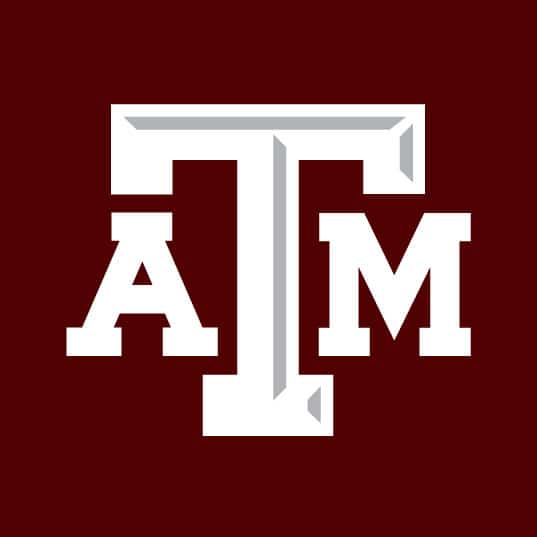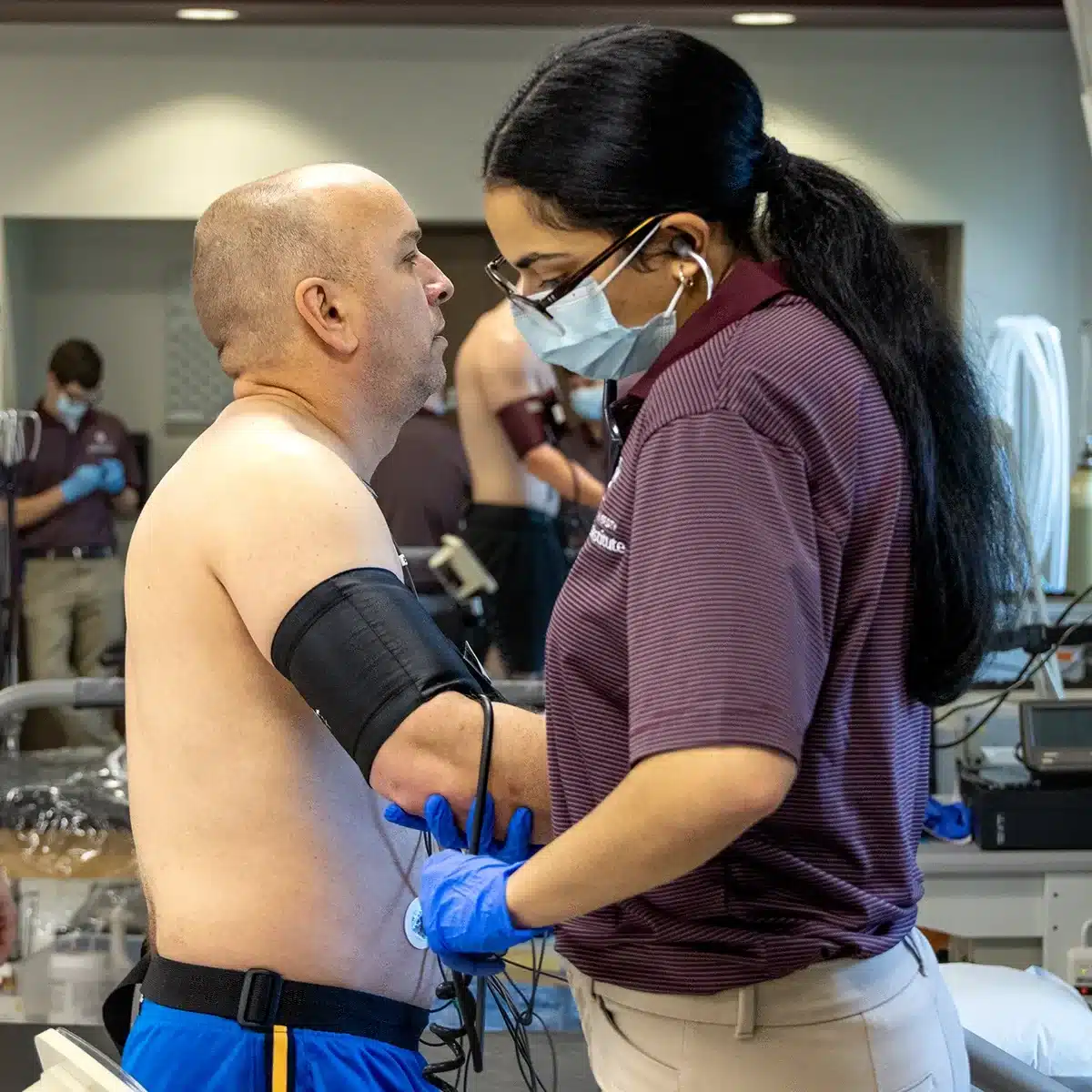B.S. in Kinesiology: PK-12 Physical Education Teacher Certification
The Department of Kinesiology and Sport Management will no longer be enrolling new students into the PEK Teacher Certification program. All current students will be supported and programs will be maintained through graduation.
The Physical Education (PEK) degree is for students wishing to teach Physical Education in public or private schools. The degree plan prepares students for successful completion of the certification requirements outlined by the State of Texas. Upon graduation, students will be certified to teach in grades Preschool – 12 in Physical Education/Wellness only, however students are encouraged to seek certification in a second teaching field through the use of core curriculum and support field electives.
Program Details
Degree: Bachelor of Science, Kinesiology
Concentration: Physical Education Teacher Certification
Program Delivery: Traditional
Program Hours: 120
For a better understanding of your total cost of attendance (COA), please visit our cost and tuition rates webpage (https://aggie.tamu.edu/billing-and-payments/cost-and-tuition-rates). This webpage will provide you with an opportunity to review estimated COA information for undergraduate, graduate and professional students, as well as other resources such as the tuition calculator and billing and fee explanations.
Degree Plan
The 120-hour degree plan includes a full semester of student teaching in a public school setting after the completion of course work. These field experiences differ for each student, and are fit to meet the student’s interests.
Phase I: Independent development opportunities
Students will be required to engage in 100 hours of self-directed field experiences in the schools, community, coaching or tutoring settings. Students may begin working on these hours upon entering the first phase of the program, and should seek direction from their advisor regarding the qualified experiences. Documentation of the 100 hours is required and students should use a Documentation Log to track these hours.
Phase II: Professional development sequence: Early field-experience
In phase II, within the context of HEFB/KNFB 222, students will be required to complete 45 hours of self-directed field work evenly divided between school, community, and coaching/tutoring settings. These 45 hours will be part of the overall 100 hours of self-directed experiences.
No other course work experiences will be counted in the 100 hours from the independent development opportunities.
As students’ progress through phase II a variety of directed field experiences will occur within the different courses. Students will need to be aware that when taking courses listed in the professional development sequence (see below) additional hours outside of class meetings will be required. The amount of time required is indicated with each course listed.
Field experiences are designed to prepare students for the unique settings they will encounter as either health or physical educators. Classroom experiences are provided in a support field of the students choosing to enhance their ability to teach additional content such as science, math, English etc.
Phase III: Professional development sequence: Student teaching
In the final phase of the program, all students will participate in a semester long (12 week) student teaching experience aligned with public school calendars in the state of Texas.
During this experience they will be placed in both their primary teaching field of either health or physical education and in their self-selected support field of science, math, English etc.
Additional Degree Plan Resources
Field Experiences & Methods
Students in PEK and SCH will have the following field-based courses in common. These are considered to be phase II courses and all have a required field component.
Required Courses for both Physical Education & School Health Students
- KNFB/HEFB 222: Teaching and Schooling in the Modern Society has a 45 hour self-directed field experience requirement evenly divided among school, community, and coaching or tutoring settings.
- HLTH 421: Elementary School Health Education includes 4 hours of field experience in a K-5 setting. Students develop skills for creating interdisciplinary lessons that emphasize health and physical education. Students also design and implement an interactive health fair for elementary students.
- KINE 429: Adapted Physical Activities includes a 10 hour field experience requirement. Students will have two unique experiences arranged by their instructor. In one experience students facilitate a 5 week swimming experience for a child with special needs. In the other experience students go to a local school and assist a child with special needs within the context of their Physical Education class.
- KNFB/HEFB 324: Technology for Teachers has 24 hours of mentoring and tutoring using technological tools.
- KNFB/HEFB 325: Secondary School Teaching has 24 hours of observation and minor student interaction such as helping with guided practice, group work or teaching part of a lesson.
Required Courses for Physical Education Students
- KNFB 315: Elementary Physical Activities has a 10-hour elementary physical education school field experience arranged by the instructor. Within these hours students observe, assist and teach lessons to elementary aged children in a gymnasium or outdoor setting.
- KNFB 416: Middle and Secondary Physical Activities has a 10-hour middle or high school field experience arranged by the instructor. Within these hours students practice teaching 8 lessons using a variety of designated teaching styles. This course occurs in the fall or spring semester just prior to student teaching.
Required Courses for School Health Students
- HLTH 415: School Health Education has 10 hours of field experience in public, private and collegiate classrooms. Through directed independent study students investigate the components of the Coordinated School Health Program (CSHP). Students also design and deliver a health lesson to a classroom of collegiate level students.
- HLTH 333: Methodology in Health Education has a 15-hour middle or high school field experience arranged by the instructor at a local public or private school. Within these hours students practice teaching 10-12 lessons using a variety of designated teaching styles. This course occurs in the fall or spring semester just prior to student teaching.
Student Teaching
Student teaching is the capstone experience for all teacher preparation degree plans. Students must meet all School of Education and Human Development requirements before entering student teaching. Students are not allowed to take additional courses to complete program or university requirements during the student teaching semester or after completing student teaching. There are no exceptions to this rule.
SEHD personnel make student teaching arrangements. For student teaching experiences, generally, you will not be placed in a high school you attended, nor will you be placed with teachers you know or teachers whom your relatives or friends know or in a school where your relatives work. For the good of teacher candidates, departments in SEHD make every effort to avoid even the appearance of favoritism so that the validity of your degrees and/or credentials will not be questioned.
Students teach for 12 weeks in Phase III of the program. All other coursework is completed before this phase. Students must complete the Student Teaching Application before beginning their student teaching.
HEFB/KNFB 450 (6 credit hours)
- Stage I (Observe and Assist): Stage I is primarily a period of orientation and observation at which time student teachers learn various school and classroom procedures and become acquainted with the students, faculty, and administration.
- Stage II (Team Teaching): Stage II is a period when student teachers assume more of the everyday responsibilities of regular teachers and begin actively participating in the instructional process. During this phase, the student teacher assists both in and out of the classroom and prepares for more teaching. As in Stage I, the primary responsibility for teaching in Stage II rests with the cooperating teacher. However, the student teacher begins “phasing” into the instructional process by gradually assuming increased responsibilities until he/she is ready to teach an entire lesson after observing the cooperating teacher model appropriate instruction. Co-planning lessons occur during this stage.
- Stage III (Full Responsibility): Stage III is the time when the student teacher takes complete charge of a teaching situation. Since the student teacher assumed increasing responsibility throughout Stage II, the transition to this stage is not abrupt. NOTE: Students are given an opportunity to spend time in their support field when time and scheduling permits.
Important Dates and Meetings
To be cleared for student teaching, students must attend two mandatory meetings the semester before student teaching.
- Typically held the third Wednesday of the Methods Semester from 5:30 pm to 7:00 pm. (Location to be announced)
- Usually held the Wednesday before final exams (reading day) from 1:00 pm to 3:00 pm. (Location to be announced)
KNSM Registration Course Numbers and Section
Local Placement
- KINE-KNFB 450 section 504
- HLTH-HEFB 450 section 504
Distant Placement
- KINE-KNFB 450 section 554
- HLTH-HEFB 450 section 554
Professional Liability Insurance
All students in field experiences and student teaching are required to have professional liability insurance. Organizations that provide this insurance at no cost are:
- Texas Classroom Teachers Association, (888-879-8282)
- Association of Texas Professional Educators, (800-777-ATPE)
Letter of Full-Time Status for Insurance
Since student teaching is 6 hours, you may need a “Verification of Enrollment” to identify yourself as a full-time student. After the 12th class day, an official letter may be requested as follows:
- Using your Neo account, email records@tamu.edu.
- Include the address or fax number of the location you would like it sent.
- For more information, please visit with your financial aid counselor and your insurance carrier.
GPA Requirement
- The state requires a minimum GPA of 2.75 for admission to upper-level education programs and for teacher certification.
- Once admitted into upper-level coursework students must maintain a minimum GPA of 2.5 or higher (as specified by program). Check with your advisor for program specific requirements.
Certification Statement
Course content, state requirements and teaching certification areas are constantly under revision. It is the expectation that students with certification granting degree plans out of SEHD will take the certification exams at the appropriate time during their coursework. Upon graduation, they should complete the certification process. To provide quality teachers to the students in the State of Texas, the School of Education and Human Development at Texas A&M have instituted the following:
- Option 1: Certification (exams and issuance of the teaching certificate through TEA) will need to be completed within twelve months post-graduation.
- Option 2 Not applicable for this program.
- Option 3: Graduates who request certification after two years post-graduation will be referred to an alternative certification program. Returning graduates are responsible for all expenses associated with the alternative certification program.
Note: Applicants are reviewed by committee and admitted on a competitive basis. Meeting the minimum requirements listed does not guarantee admission.
Code of Ethics
All students in the degree plans leading to teacher certification must complete the on-line Ethics module prior to participating in field-based experiences. In addition to the Aggie Honor Code, it is the expectation that all students working on degree plans leading to teacher certification through SEHD will abide by the Code of Ethics and Standard Practices for Texas Educators as put forth by the Texas Administrative Code. Any violation of these Codes may result in dismissal from the school.
Contact Advisors
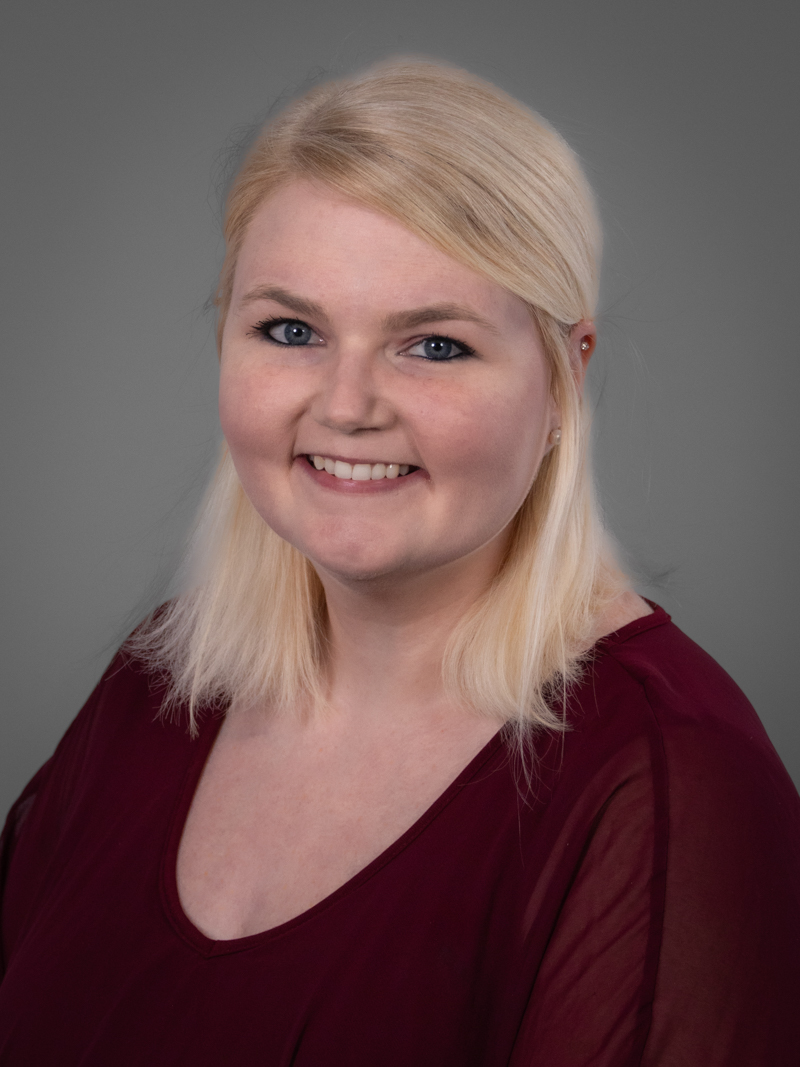
Program Faculty
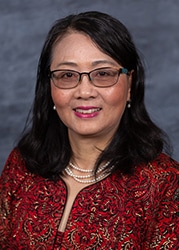
Dr. Ping Xiang
Professor
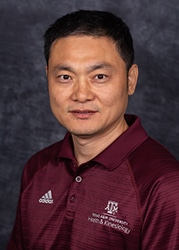
Dr. Jiling Liu
Clinical Assistant Professor
Frequently Asked Questions
Bachelor's
I still have questions. Who can I contact to help me?
Please feel free to contact our front office at 979-845-4530 for further questions.
I am a transfer student and I want to change my major to an KNSM program. What courses will transfer?
For courses not specified in our transfer requirements per major, refer to our Transfer Course Equivalency Guide.
How can these programs help me get into professional school?
Our programs typically have pre-requisites built in, or can be paired with courses offered at Texas A&M. Your advisor will work with you on your academic goals while keeping graduation a top priority. You will be encouraged to get in contact with the Professional School Advising Office; they provide resources and services that can help you get into the professional school of your choice.
What are the typical program costs?
The following website can help you estimate the cost of the program, including current costs of tuition and fees: Estimate your attendance cost.
Please note: you must update the program hours.
For a better understanding of your total cost of attendance (COA), please visit our cost and tuition rates webpage (https://aggie.tamu.edu/billing-and-payments/cost-and-tuition-rates). This webpage will provide you with an opportunity to review estimated COA information for undergraduate, graduate and professional students, as well as other resources such as the tuition calculator and billing and fee explanations.
I live out of state. Do you accept out-of-state applicants?
Yes, we accept in-state and out-of-state applicants.
